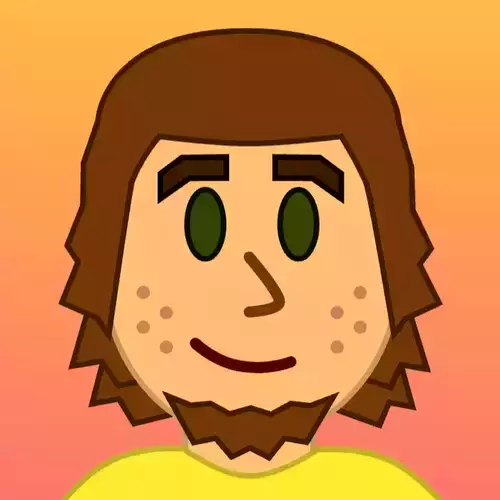Discuss Scratch
- Discussion Forums
- » Suggestions
- » Arrays
![[RSS Feed] [RSS Feed]](//cdn.scratch.mit.edu/scratchr2/static/__5b3e40ec58a840b41702360e9891321b__//djangobb_forum/img/feed-icon-small.png)
- braxbroscratcher
-
 Scratcher
Scratcher
1000+ posts
Arrays
That's a bad reason to no support. If you no support because there is another suggestion that's better, then that's mildly unfair to the writer of the suggestion.First class lists would allow infinite dimensions.An array is just a more accurate term for lists.But it can be more than one dimension. Lists can only be one.
First class lists would allow for what you are suggesting and, plus it would be a more intuitive feature.
Sigton
No support because first class lists would be a lot simpler and more powerful.
Instead, it'd be better to support but say that another idea would accomplish the goal more efficiently.
- Sigton
-
 Scratcher
Scratcher
1000+ posts
Arrays
First class lists can have unlimited dimensions.An array is just a more accurate term for lists.But it can be more than one dimension. Lists can only be one.
First class lists would allow for what you are suggesting and, plus it would be a more intuitive feature.
Sigton
Sigton
- braxbroscratcher
-
 Scratcher
Scratcher
1000+ posts
Arrays
ik, i was correcting you on your first point.First class lists can have unlimited dimensions.An array is just a more accurate term for lists.But it can be more than one dimension. Lists can only be one.
First class lists would allow for what you are suggesting and, plus it would be a more intuitive feature.
Sigton
Sigton
- Jonathan50
-
 Scratcher
Scratcher
1000+ posts
Arrays
An array is just a more accurate term for lists.A list is a sequence of things.
An array is a way to implement a list. (Linked lists are another way.) It's several consecutive places in your computers memory (one for each element of the array).
Scratch's lists are implemented as dynamic arrays.
- -ShadowOfTheFuture-
-
 Scratcher
Scratcher
1000+ posts
Arrays
Support! I can see many instances in which arrays would be useful.
- llloofagelll
-
 Scratcher
Scratcher
16 posts
Arrays
So 2D lists? What blocks would be used to get/set these arrays?I think something like get item from array^ letter: <letter> number: <number>
I think first-class lists might be easier to understand/use when it comes to multidimensional lists
- lapisi
-
 Scratcher
Scratcher
1000+ posts
Arrays
rejected
1.7 2D listsEDIT: ninja'd
2D lists, also known as 2D arrays, nested lists, or matrices, are a type of data structure that allows you to put an entire list as an element of another list; that is, it allows you to put lists inside of lists. These sorts of data structures are used widely in other programming languages.
This block, and others, would allow you to create 2D lists to store information, sort of like a table. However, this is too complicated for what is supposed to be an introductory programming language. In addition, there are workarounds possible by using an ordinary list and an indexing function. For those who are interested, it may be worth checking out Snap!. It is a block-based programming language designed for more experienced programmers, and has more advanced data structures than Scratch does.
Last edited by lapisi (Jan. 30, 2021 15:58:43)
- PicoMetrics
-
 Scratcher
Scratcher
1000+ posts
Arrays
Support for uses listed.
mOCKUP?
mOCKUP?
array () with data () ::variables
Last edited by PicoMetrics (Jan. 30, 2021 17:54:01)
- PicoMetrics
-
 Scratcher
Scratcher
1000+ posts
Arrays
Support for uses listed.
mOCKUP?array () with data () ::variables
add array () to listv::variables
Last edited by PicoMetrics (Jan. 30, 2021 17:54:57)
- lapisi
-
 Scratcher
Scratcher
1000+ posts
Arrays
but it's rejectedSupport for uses listed.
mOCKUP?array () with data () ::variablesadd array () to listv::variables
Last edited by lapisi (Jan. 30, 2021 17:59:31)
- Za-Chary
-
 Scratcher
Scratcher
1000+ posts
Arrays
rejectedThanks for the quote — closed as rejected.1.7 2D listsEDIT: ninja'd
2D lists, also known as 2D arrays, nested lists, or matrices, are a type of data structure that allows you to put an entire list as an element of another list; that is, it allows you to put lists inside of lists. These sorts of data structures are used widely in other programming languages.
This block, and others, would allow you to create 2D lists to store information, sort of like a table. However, this is too complicated for what is supposed to be an introductory programming language. In addition, there are workarounds possible by using an ordinary list and an indexing function. For those who are interested, it may be worth checking out Snap!. It is a block-based programming language designed for more experienced programmers, and has more advanced data structures than Scratch does.
Ha, you got me; I'm not changing the text color though.
Last edited by Za-Chary (Jan. 30, 2021 19:20:40)
- Discussion Forums
- » Suggestions
-
» Arrays
![[RSS Feed] [RSS Feed]](//cdn.scratch.mit.edu/scratchr2/static/__5b3e40ec58a840b41702360e9891321b__//djangobb_forum/img/feed-icon-small.png)












